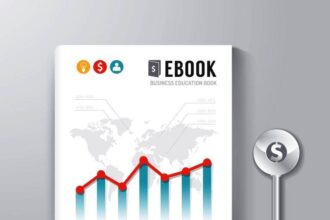 Over the past year, I have seen a very positive and encouraging shift in my discussions with organizations about the analytic talent that they employ. More and more discussions are about how to best structure an analytics organization as many companies have now found themselves with enough analytic professionals to make it necessary to figure out how to make the most of them.
Over the past year, I have seen a very positive and encouraging shift in my discussions with organizations about the analytic talent that they employ. More and more discussions are about how to best structure an analytics organization as many companies have now found themselves with enough analytic professionals to make it necessary to figure out how to make the most of them.
 Over the past year, I have seen a very positive and encouraging shift in my discussions with organizations about the analytic talent that they employ. More and more discussions are about how to best structure an analytics organization as many companies have now found themselves with enough analytic professionals to make it necessary to figure out how to make the most of them. The speed of the shift from “should we hire anyone?” to “how do I organize all these people?” has surprised me. We are reaching a critical mass of analytic talent in organizations so that organizing them is a challenge. I am thrilled to see this challenge arise because it means that companies are truly starting to embrace analytics. It also means that over time, it will be easier to have a fulfilling career path in analytics than it was when I first started out.
Over the past year, I have seen a very positive and encouraging shift in my discussions with organizations about the analytic talent that they employ. More and more discussions are about how to best structure an analytics organization as many companies have now found themselves with enough analytic professionals to make it necessary to figure out how to make the most of them. The speed of the shift from “should we hire anyone?” to “how do I organize all these people?” has surprised me. We are reaching a critical mass of analytic talent in organizations so that organizing them is a challenge. I am thrilled to see this challenge arise because it means that companies are truly starting to embrace analytics. It also means that over time, it will be easier to have a fulfilling career path in analytics than it was when I first started out.
Even just a few years ago, many organizations were still discussing if they should hire full time analytic professionals, let alone how they should organize them. They typically had either no analytic professionals on staff, or a very small number scattered across a large organization. (I consider an analytic professional to be someone who focuses on deeper analytics, with work focusing on data mining, predictive modeling, and data science, among others.) There have always been companies well ahead of the curve, most notably in the financial industry. However, most companies were just getting started with the development of an analytics organization up until the last few years.
There have been numerous discussions on how to structure analytic teams. I addressed the topic in Taming The Big Data Tidal Wave. Tom Davenport also recently weighed in on the topic in a blog for the International Institute for Analytics. We both agree that some centralized analytic function is required. The way Tom describes “analysts assigned to and rotated among business units” fits well with my preferred hybrid model. In the end, it isn’t as important to me if the business unit resources report directly to the central team or directly to the units as long as there is strong linkage all around and the business unit perceives themselves as owning the resources.
Rather than focus on the specific structure, I want to focus here on one aspect that is often overlooked related to a centralized team. What is often overlooked is the fact that not all valuable analytics are at a business unit level. Any given unit will fund only those analytics that are core to the unit. However, at the corporate level, there is another layer of standard analytics and also some entirely new analytics that become relevant when looking across the entire business. Without a centralized function with funding to specifically address cross unit analytics, such analytics just won’t get done. In many cases, the individual units may benefit along with corporate, but not enough to absorb the cost alone. When the cost is shared and the benefits enabled for all units, it can be a big win for the company.
If your organization is among those continuing to grow an analytics function, start to think about the best way to organize your analytic professionals given the needs and political realities of your situation. It may be a challenging discussion, but the good news is that these days it is easy to find others who are struggling with the same issue. And we will soon have ample examples of those who have completed their transition to learn from.
Originally published by the International Institute for Analytics









